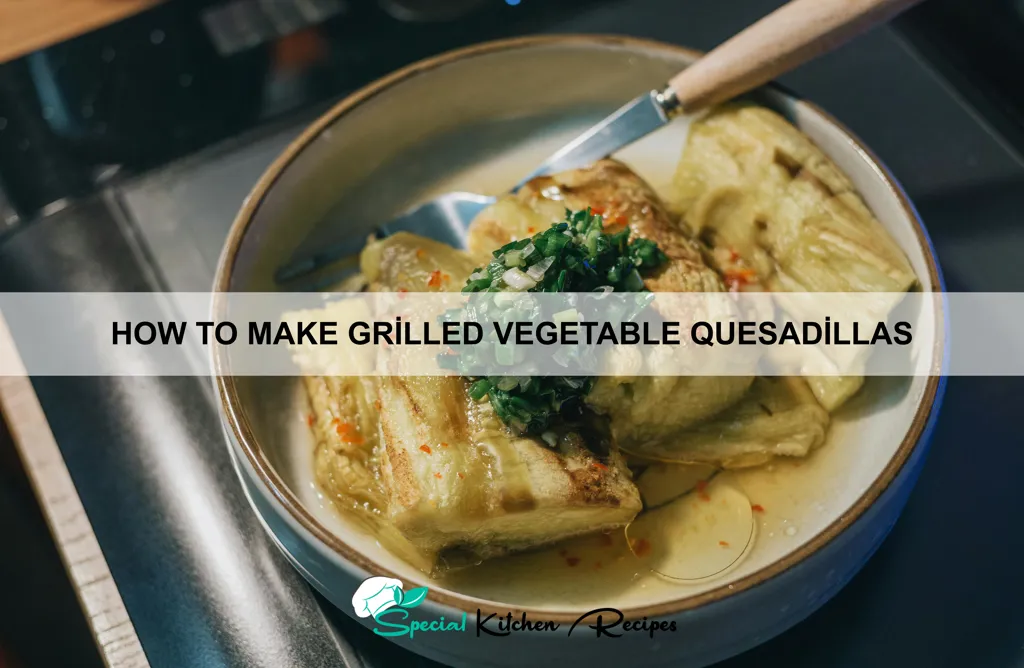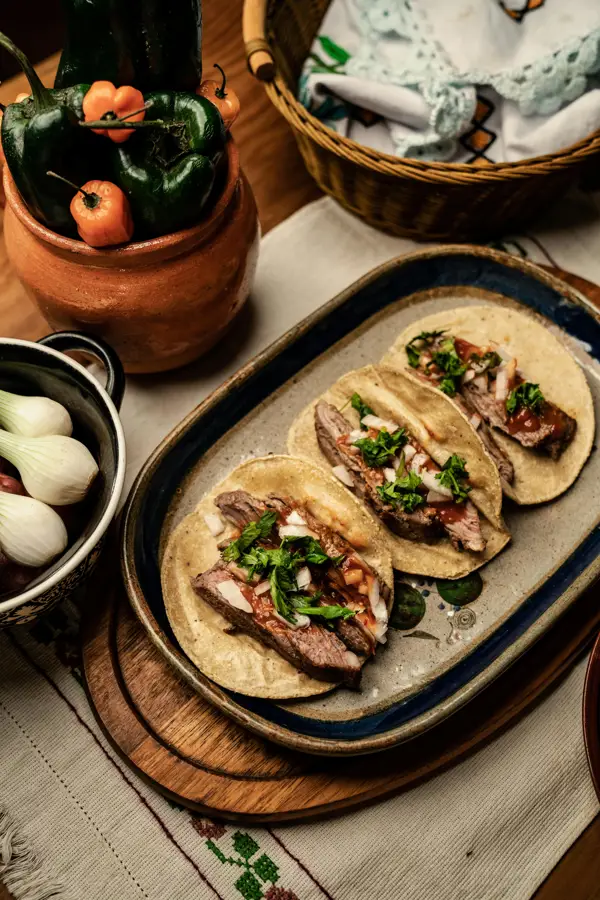Quesadillas, a staple of Mexican cuisine, boast a history as rich and layered as their delicious fillings. While pinpointing their exact origin is difficult, evidence suggests variations existed long before the arrival of Europeans, with indigenous communities utilizing corn tortillas to create savory and sweet flatbreads. The simple elegance of the quesadilla – essentially a grilled or pan-fried tortilla filled with cheese – allowed for incredible adaptability based on available ingredients. The modern quesadilla, widely popularized in the United States and beyond, features a far broader range of fillings than its humble ancestors, including vegetables, meats, beans, and various sauces.
The grilled vegetable quesadilla represents a delicious evolution of this classic dish. It caters to a growing global interest in vegetarian and vegan options, reflecting a significant shift in dietary preferences. Statistics show a steady increase in vegetarianism and veganism worldwide, with a projected continued rise in the coming years. This has directly influenced culinary trends, pushing chefs and home cooks alike to explore creative and flavorful plant-based recipes. The grilled vegetable quesadilla perfectly embodies this trend, offering a hearty, satisfying meal that is both delicious and ethically conscious. The vibrant colors and fresh flavors make it a visually appealing dish, perfect for sharing or enjoying as a light lunch or dinner.
Culturally, the quesadilla holds a significant place in Mexican culture, representing a simple yet deeply satisfying food that transcends socioeconomic boundaries. It’s a common street food, a comforting home-cooked meal, and a frequent feature at celebrations and gatherings. The adaptability of the quesadilla also reflects the diverse culinary landscape of Mexico, with regional variations showcasing local ingredients and cooking styles. The grilled vegetable quesadilla, though a modern interpretation, honors this tradition by using fresh, seasonal ingredients and celebrating the versatility of the humble tortilla. It speaks to the ongoing evolution of food culture, demonstrating how traditional recipes can be adapted to meet modern tastes and dietary needs while retaining their cultural essence.
Ingredients and Measurements
This recipe yields approximately 4 large quesadillas. Adjust quantities as needed depending on your appetite and the number of guests you’re serving. The beauty of quesadillas is their adaptability – feel free to substitute your favorite vegetables!
Vegetables: The star of this show! We’ll be using a vibrant mix for optimal flavor and color. Aim for about 2 cups of chopped vegetables total. This can be adjusted based on preference. Consider the water content of your vegetables – zucchini and bell peppers release more moisture than onions, so you might want to slightly adjust quantities accordingly.
- 1 medium zucchini, diced into ½-inch pieces (approximately 1 cup)
- 1 red bell pepper, seeded and diced into ½-inch pieces (approximately ½ cup)
- ½ medium red onion, thinly sliced (approximately ½ cup)
- 1 cup sliced mushrooms (cremini or button work well)
Cheese: The melty, gooey goodness that holds it all together! We recommend a blend for a richer flavor profile. Use a cheese that melts well, such as Monterey Jack, cheddar, or a Mexican blend. Avoid very dry cheeses.
- 2 cups shredded Mexican cheese blend (or a combination of Monterey Jack and cheddar)
Tortillas: The foundation of your quesadilla. Choose large flour tortillas (10-12 inches in diameter) for easy handling and ample space for fillings. You can experiment with corn tortillas, but they are more prone to breakage.
- 4 large (10-12 inch) flour tortillas
Seasoning: Don’t underestimate the power of simple seasonings! A little goes a long way. Taste your vegetables before adding the final seasoning to ensure you have the perfect balance of flavor. Fresh herbs can also elevate the dish.
- 1 teaspoon olive oil
- ½ teaspoon salt
- ¼ teaspoon black pepper
- ¼ teaspoon garlic powder (optional)
- ¼ teaspoon chili powder (optional, for a touch of heat)
Optional additions: Feel free to get creative! Consider adding a sprinkle of cumin, a squeeze of lime juice after grilling, or some chopped cilantro for extra freshness. Adding a dollop of sour cream or guacamole after grilling is a delicious finishing touch.
Vegetable Preparation
The success of your grilled vegetable quesadillas hinges on properly preparing your vegetables. We’ll be using a vibrant mix of bell peppers, onions, and zucchini, but feel free to substitute your favorites! Aim for about 2 cups of chopped vegetables in total.
Begin by washing all your vegetables thoroughly under cold running water. Remove any stems, cores, or blemishes. For the bell peppers, cut them in half lengthwise, remove the seeds and membranes, and then slice into approximately 1/4-inch strips. Aim for roughly 1 cup of sliced bell peppers. Choose a variety of colors for visual appeal – red, yellow, and orange work beautifully.
Next, prepare the onions. One medium-sized yellow onion will suffice. Peel the onion and slice it into thin half-moons. Avoid overly fine slicing, as the onions might burn during grilling. About 1/2 cup of sliced onions should be perfect.
Finally, prepare the zucchini. Use one medium-sized zucchini. Wash it thoroughly and trim the ends. Slice the zucchini lengthwise into 1/4-inch thick half-moons, similar to the onions. Too thin and they’ll become mushy; too thick and they won’t cook through evenly. You should have approximately 1/2 cup of sliced zucchini.
Important tip: Consistent vegetable size is key for even cooking. Aim for relatively uniform slices to ensure all the vegetables grill to the perfect tenderness at the same rate. This will prevent some vegetables from being overcooked while others remain undercooked.
Once all your vegetables are prepped, you can optionally toss them with a little olive oil (about 1 tablespoon) and season them generously with salt and pepper. This adds flavor and helps prevent sticking to the grill pan. Don’t over-season; you can always add more seasoning later if needed. You can also add other spices, such as cumin, chili powder, or paprika, to enhance the flavor profile.
Now that your vegetables are prepared, you’re ready to move on to grilling them! Remember to keep an eye on them while they grill to ensure they don’t burn.
Cheese Selection and Prep
The cheese you choose is paramount to a delicious grilled vegetable quesadilla. The ideal cheese should melt well, have a pleasant flavor that complements the vegetables, and hold its shape enough to prevent a soupy filling. Avoid cheeses that are too dry, as they won’t melt properly, or too wet, which will make the quesadilla soggy.
For a classic quesadilla, we recommend a blend of cheeses for optimal texture and flavor. A good starting point is a combination of Monterey Jack (8 ounces) for its creamy melt and mild flavor, and cheddar cheese (4 ounces), offering a sharper, more robust taste. The cheddar adds a nice counterpoint to the sweetness of the grilled vegetables. Feel free to experiment! Pepper Jack (2 ounces) adds a spicy kick, while Queso Oaxaca (4 ounces) provides a stringy, melt-in-your-mouth texture.
Shredding the cheese is crucial for even melting and distribution throughout the quesadilla. Using a box grater, shred the cheeses separately. This prevents the cheeses from clumping together and ensures an even distribution of flavors and textures. If you’re short on time, pre-shredded cheese from the grocery store works in a pinch, but freshly grated cheese generally melts better and tastes fresher.
Properly storing your cheese is important to maintain its quality and prevent it from drying out. Keep your cheese tightly wrapped in plastic wrap or placed in an airtight container in the refrigerator. If you have leftover cheese from grating, you can store it in a freezer-safe container in the freezer for up to 3 months. When ready to use, simply thaw it overnight in the refrigerator.
Once you’ve shredded your cheeses, it’s best to combine them in a bowl just before assembling your quesadillas. This helps prevent the cheese from sticking to itself and ensures a uniform blend of flavors in your final product. Remember, the amount of cheese is adjustable to your preference, but using too little will result in a dry quesadilla, while too much can make it messy and difficult to cook.
Quesadilla Assembly
Now that your vegetables are prepped and your cheese is ready, it’s time to assemble your delicious grilled vegetable quesadillas! This stage is all about creating a balanced and flavorful filling that will melt beautifully and hold its shape during grilling.
Begin by laying out two large flour tortillas on a clean, flat surface. We recommend using 10-inch tortillas for optimal size and filling capacity. Avoid using overly thin tortillas, as they are more prone to tearing during cooking.
For each quesadilla, spoon approximately 1/2 cup of your prepared vegetable mixture onto one half of each tortilla. Don’t overcrowd the tortilla; too much filling will make it difficult to fold and cook evenly, and could lead to spillage. Aim for a balanced distribution of all your vegetables to ensure every bite is flavorful and texturally interesting.
Next, sprinkle approximately 1/4 cup of your shredded cheese over the vegetable mixture. We recommend a blend of cheeses, such as Monterey Jack, cheddar, and pepper jack, for a complex and delicious flavor profile. You can adjust the amount of cheese to your preference, but remember that too much cheese can make the quesadilla greasy.
Now, carefully fold the other half of the tortilla over the filling, creating a half-moon shape. Gently press down on the edges to seal in the filling and prevent leakage. You can use a fork to crimp the edges for a more professional look and to help ensure a tight seal. This step is crucial for preventing the filling from escaping during cooking.
Before grilling, lightly brush both sides of the assembled quesadilla with a little oil – about 1 teaspoon of olive oil or a neutral-flavored cooking oil per quesadilla. This will help prevent sticking and promote even browning. Don’t use too much oil, as this could lead to a greasy quesadilla. A light coating is all you need.
Once your quesadillas are assembled and lightly oiled, you’re ready to move on to the grilling stage! Remember to work efficiently to prevent your prepared vegetables from getting cold. Prepare all your quesadillas before beginning to grill to maintain a consistent cooking time.
Grilling Techniques for Perfect Quesadilla Vegetables
Grilling your vegetables before incorporating them into your quesadillas adds a smoky depth of flavor that elevates the dish significantly. To achieve perfectly grilled vegetables, follow these techniques:
Preparation is Key: Begin by prepping your vegetables. For this recipe, let’s assume we’re using 1 bell pepper (any color), 1 zucchini, and ½ red onion. Cut the bell pepper into ½-inch thick strips, the zucchini into ¼-inch thick slices, and the red onion into ½-inch thick slices. Proper slicing ensures even cooking. Lightly brush all vegetables with 1 tablespoon of olive oil, and season generously with salt and pepper. Consider adding other spices like chili powder, cumin, or paprika for extra flavor.
Grilling Method: Preheat your grill to medium-high heat (around 375-400°F). Ensure your grill grates are clean to prevent sticking and ensure proper grill marks. Place the vegetables directly onto the hot grates. For more delicate vegetables like zucchini, you might consider using a grill basket to prevent them from falling through the grates.
Cooking Time and Technique: Grill the vegetables for approximately 3-5 minutes per side, or until they exhibit nice grill marks and are tender-crisp. Avoid overcooking, as this will result in mushy vegetables. Use tongs to frequently turn the vegetables to ensure even cooking. Thicker pieces like bell peppers may require a slightly longer cooking time (up to 7 minutes per side).
Monitoring for Doneness: The vegetables are ready when they offer slight resistance when pierced with a fork or spatula. They should be tender but still retain a slight bite. Don’t be afraid to taste-test a piece to ensure they’ve reached your desired level of doneness.
Removing from the Grill: Once cooked, remove the vegetables from the grill and transfer them to a plate to cool slightly. Allowing them to cool slightly before adding them to the quesadillas will prevent the cheese from melting too quickly and potentially burning.
Professional Tip: For a truly smoky flavor, consider adding a few wood chips (soaked in water for at least 30 minutes) to your grill during the cooking process. Mesquite or hickory chips pair well with grilled vegetables.
By following these grilling techniques, you’ll create flavorful and visually appealing grilled vegetables that will transform your quesadillas into a culinary masterpiece.
Serving Suggestions
These grilled vegetable quesadillas are incredibly versatile and can be served in a variety of ways, depending on your preference and the occasion. A simple approach is perfect for a quick weeknight meal, while a more elaborate presentation elevates them to a stunning appetizer or even a light lunch.
For a casual, family-friendly meal: Serve 2-3 quesadillas per person, alongside a simple side salad. A light vinaigrette dressing, perhaps a citrus-herb vinaigrette, complements the grilled vegetables beautifully. Consider adding a dollop of sour cream or Mexican crema (about 2 tablespoons per quesadilla) for extra richness and tang. A side of your favorite salsa, about ½ cup per person, adds a spicy kick and vibrant color.
To elevate the quesadillas for a more sophisticated occasion: Cut each quesadilla into smaller wedges (about 6 wedges per quesadilla) for easy sharing. Arrange the wedges on a platter garnished with fresh cilantro sprigs and a sprinkle of cotija cheese (about 1 tablespoon per quesadilla). A small bowl of guacamole (about ¼ cup per person) adds a creamy texture and complements the grilled vegetables. Consider serving with a side of roasted sweet potato fries or a vibrant mango salsa for a contrasting sweetness.
For a lighter option: Reduce the amount of cheese used in the quesadillas to make them less heavy. Serve them with a side of black beans (about ½ cup per person), seasoned with lime juice and a pinch of cumin. This adds protein and fiber, creating a more balanced and satisfying meal. A simple pico de gallo (about ¼ cup per person) adds freshness and acidity.
Don’t forget the drinks! These quesadillas pair well with a variety of beverages. Margaritas, Mexican beer, or even a refreshing iced tea are all excellent choices. For a non-alcoholic option, consider a homemade agua fresca, such as a watermelon or hibiscus agua fresca.
Pro Tip: For optimal presentation, ensure the quesadillas are cut neatly and evenly. Garnishing with fresh herbs and a sprinkle of cheese adds visual appeal. Consider serving them warm, straight from the grill pan, for the best flavor and texture.
Remember to adjust quantities based on the number of servings and the appetites of your guests. Experiment with different side dishes and garnishes to find your perfect combination. Enjoy your delicious grilled vegetable quesadillas!
Recommendations
For the best grilled vegetable quesadillas, ensure your vegetables are evenly sliced for uniform cooking. Overcrowding the pan will lead to steaming rather than grilling, so work in batches if necessary. Don’t be afraid to experiment with different vegetable combinations! Roasted red peppers, zucchini, and caramelized onions would all be delicious additions.
Serving suggestions are plentiful. These quesadillas are fantastic on their own, but you can elevate them with a variety of accompaniments. A dollop of sour cream or Greek yogurt adds a creamy contrast, while a sprinkle of fresh cilantro or a squeeze of lime juice brightens the flavors. Pico de gallo or salsa verde offer a vibrant, spicy kick.
Storage: Leftover quesadillas can be stored in an airtight container in the refrigerator for up to 3 days. Reheat gently in a skillet or microwave until warm. For best results, avoid reheating in the microwave for extended periods, as this can make the tortillas soggy. Consider freezing individual quesadillas for longer storage – wrap each one tightly in plastic wrap before placing them in a freezer bag.
Complementary dishes to pair with your grilled vegetable quesadillas include a simple side salad with a light vinaigrette, black beans and rice, or a fresh fruit salad for a balanced meal. They also make a great addition to a larger Mexican-inspired spread.
Nutritional Information (approximate per quesadilla, based on average vegetable and cheese quantities): Calories: 350-450, depending on cheese and vegetable choices. This is an estimate and can vary greatly depending on the ingredients used. The nutritional profile will be rich in vitamins and minerals from the vegetables, providing a good source of fiber and antioxidants. The cheese contributes protein and calcium. For a more precise nutritional breakdown, use a nutrition calculator and input your specific ingredients and quantities.





